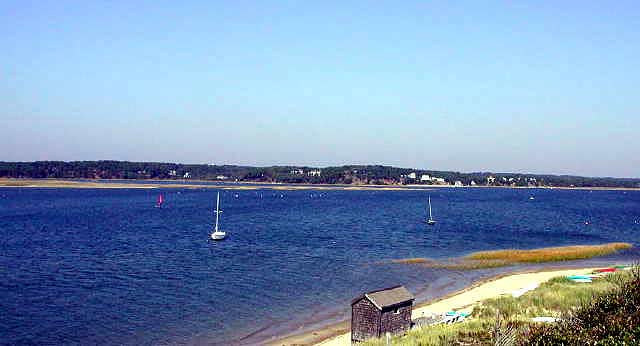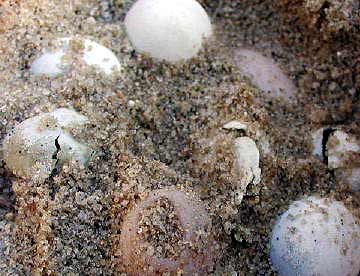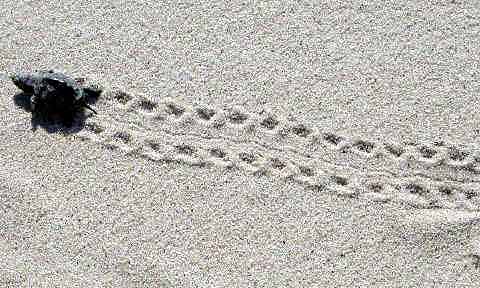Summerís Last — 5 October 2001
Summer celebrated its last stand today, punctuating three days of sublime weather with perfection. Forecasts call for a quick transition to fall tomorrow. So, late nests and slow incubators reacted to this unexpected heat wave with a burst of activity. Hatchlings from Great Island in the northwest to Lieutenant Island in the southeast have emerged, and those that have not yet emerged have at least begun to pip.


 |
 |
Nest 130, which is located in the dune southeast (right) of the Lieutenant Island boathouse, was laid on 6 July near the end of this yearís nesting season. Itís one of the only known and marked nests that have not yet hatched. We checked it this afternoon, and while no hatchling have yet emerged, we discovered three of the top layer of eggs had just pipped. They should begin digging out by early next week ó weather permitting, of course. |
 |
 |
Hatchling 419 was the runt of Nest 145, measuring less than 2.4 cm and weighing under 4 g. You may recall that this nest had been crushed by vehicular traffic, killing eight of her pipped siblings in the egg chamber. Five viable eggs were harvested from the carnage and hatched a week later in my garage lab. The other four have already been returned to the marsh, but 419 remains. She has still not opened her eyes, although she does react to light and in every other way seems healthy and active and normal. |
 
In the truth-is-stranger-than-fiction category, I discovered this shorebird last night with a strange condition I had only heard about in Thoreauís writings of Cape Cod. While foraging on the tidal flats, she had obviously placed her foot in the wrong spot. A little neck clam closed on her claw and wouldnít let go. She pecked and pecked at the quahog to no avail, but she wouldnít let me near enough to free her. Unbalanced by the weight and not quite aerodynamically sound, she could only fly a few feet at a time to escape my pursuit. Unfortunately, I was on nest patrol and didnít have my long-poled net. So, I could only document her situation. |
 
The dunes of Great Island and Lieutenant Island were littered with hatchling tracks. Chris Burns, our high school intern extraordinaire, followed one set hoping to trace it back to the nest. Instead, he noticed the trail disappeared beneath a leaf of a flowering bush. Sure enough, resting in the shade with eyes shut was Hatchling 420, a tiny critter at only 3 grams and 2.35 centimeters. Chris thought heíd leave her in situ to follow the other tracks across the dunes. When he returned a minute or two later, the hatchling had disappeared. Luckily, these dune sands provide a written record and she was found under the next flowering bush, eyes closed and taking another cat nap before making the final sprint into the safety of marsh.
|
|